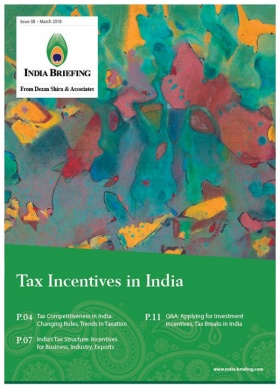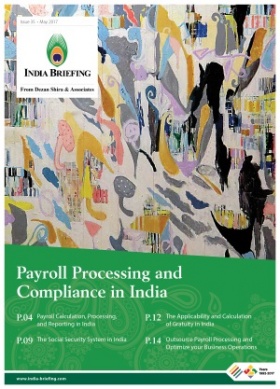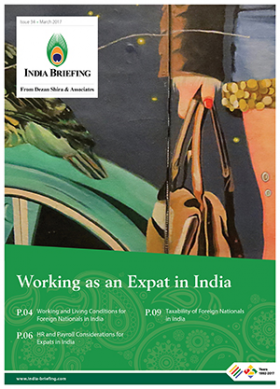Remitting Money from India: Procedures and Regulations
Sending money from India to a foreign country can often be a daunting procedure for both foreign businesses and expatriates living in India.
There are various schemes and regulations that limit how much money can be remitted and for what purpose.
Outward remittance generally has to be approved under the Foreign Exchange Management Act (FEMA), 1999, which regulates all transactions involving foreign exchange.
These guidelines are aimed at making external trade and payments easier as part of the country’s economic liberalization in the 1990s.
Restrictions and regulations under FEMA guidelines
Current account transactions that are prohibited or require approval are listed in Section 2 (j) of FEMA.
Schedule I of this section lists transactions for which foreign exchange withdrawal is prohibited, Schedule II lists transactions that require approval from the federal government, and Schedule III lists transactions that require approval from the Reserve Bank of India (RBI).
Prohibited transactions include:
- Lottery winnings;
- Income from racing; and,
- For the purchase of lottery tickets, football pools, and banned magazines.
Additionally, payment of commission on exports made towards equity investment in joint ventures (JV) or wholly owned subsidiaries (WOS) of Indian companies abroad is also prohibited.
Remittance transactions that require federal government approval range from cultural tours to prize money/sponsorship from sports activities abroad where the amount exceeds US$100,000.
Certain remittances and payments by public sector undertakings (PSUs), such as advertisements in foreign print media, are also regulated by this Schedule.
There are many outward remittance transactions that require RBI approval if they are above a certain amount.
For example, private visits per financial year need approval if they exceed US$10,000, and payment for consultancy services procured by Indian companies executing infrastructure projects need RBI approval if they are more than US$10,000,000 per project.
Remittance for business visits need RBI approval if they exceed US$25,000.
Remitting from NRO (non-resident ordinary) accounts
The most common accounts from which expatriates remit money are NROs. An NRO account is a savings account where the holder can maintain and manage their income earned in India.
Remittances from NRO accounts are limited to US$1,000,000 per financial year (April-March).
To remit from an NRO account, two documents need to be submitted: Form 15 CA, and Form 15 CB.
Although these documents can be obtained online, the process of dealing with a chartered accountant is easier with a consultant present in India.
Liberalized Remittance Scheme (LRS)
The Liberalized Remittance Scheme (LRS) was announced in 2004 as a step towards further simplification of India’s foreign exchange services.
On May 26, 2015 the RBI increased the remittance limit for individuals, including minors, from US$200,000 to US$ 250,000 per financial year.
While there are no restrictions on frequency of remittance, the individual must have an account at an authorized dealer (approved bank), and must designate a branch of that bank through which all remittances under LRS will be made.
The LRS allows Indian residents to acquire and hold shares, including property, outside India without prior approval of the RBI. In other words, it effectively waives Schedule III of FEMA.
Individuals can also open foreign currency accounts with banks outside India for carrying out transactions.
Importantly, the LRS is not available to corporate or partnership firms.
A foreign national who wishes to remit funds under the LRS will need to furnish their PAN number, which can be issued to foreign nationals with a valid visa.
The purpose of the PAN number is to bring universal identification to all financial transactions and to prevent tax evasion.
No remittance transactions will be processed without furnishing the PAN number. Moreover, in the context of remittances allowed for the maintenance of close relatives, the RBI will follow the definition of ‘relative’ as given in the Companies Act, 2013 (June 7, 2018) instead of the Companies Act of 1956.
One crucial requirement of the LRS is that the individual must have had a bank account at an authorized dealer for at least one year.
Such a bank is specifically authorized by the RBI under Section 10(1) of FEMA to deal in foreign exchange. Most large international banks are authorized dealers.
Other remittance schemes
For persons and individuals that don’t qualify for the LRS, there are other schemes that allow remittance up to a certain amount.
Remittances up to US$25,000 for current account transactions are called Small Value Remittances and can be made even without holding an account at an authorized dealer.
However, these remittances still require a Request Letter from an authorized dealer bank.
Remittances up to USD $100,000 per financial year may be made for the following purposes:
- Education abroad;
- Employment abroad;
- Emigration;
- Maintenance of close relatives; and,
- Medical treatment abroad.
All resident individuals (including foreigners with a PAN number) are allowed to use this but, like LRS, it is unavailable to corporate and partnership firms.
It is also important to note that a chartered accountant certificate (which includes forms 15CA & 15CB) is required for all transactions not covered by the LRS or Small Value Remittances.
In addition, residents who don’t have an account with an authorized dealer cannot remit under the LRS.
Remittance by foreign companies
All investments and profits earned by foreign companies in India are repatriable after taxes are paid.
However, certain sectors are subject to special conditions, such as defense, wherein investment is subject to a lock-in period until permission is granted by the Indian government.
Profits and dividends earned from an Indian company are also repatriable after payment of the dividend distribution tax due on them.
According to sections 11C.1 and 11C.2 of RBI’s Exchange Control Manual, application for remittance of profits by branches of foreign companies requires the following documents:
- Certified copies of audited Balance Sheet and Profit and Loss Account statement for the year to which the profit relates;
- Certificate from auditors covering how the remittable amount was calculated, confirmation that entire income of the branch office had accrued from sources in India, and confirmation that the requirements of the Companies Act, 1956, have all been met;
- Certificate from auditors citing RBI’s approval number and date, to the effect that the branch office has carried on business in compliance with approval granted by RBI;
- Certificate from auditors that shows sufficient funds have been set aside to meet all Indian tax liabilities, or that these liabilities have already been met; and,
- Declaration from the applicant that profits sought for remittance are purely earned in the normal course of business and do not include profits from any other source.
Authorized dealers will scrutinize the documents to make sure that the source of income is from RBI-approved activities, and that the calculations of the amount sought to be remitted are correct.
Remittance by foreign banks
After finalizing the accounts for the respective year, foreign bank branches may remit to their Head Offices the net of tax arising out of their Indian business, in accordance with the Banking Regulation Act, 1949.
Summary
India’s remittance procedures, both for expatriates and foreign companies, require significant knowledge of the relevant regulations.
In India, outward remittance is generally more difficult than inward remittance.
Companies must ensure they are in compliance and under the legal procedures so as to not fall out of the Anti-Money Laundering (AML) standards.
Businesses in doubt should seek professional help to deal with the myriad of different laws, which can take more than the needed time in the remittance process.
Editor’s Note: This article was first published on January 30, 2015, and has been updated as of July 13, 2018 to incorporate the latest regulatory developments.
About Us
India Briefing is published by Asia Briefing, a subsidiary of Dezan Shira & Associates. We produce material for foreign investors throughout Eurasia, including ASEAN, China, Indonesia, Russia, the Silk Road, & Vietnam. For editorial matters please contact us here and for a complimentary subscription to our products, please click here.
Dezan Shira & Associates provide business intelligence, due diligence, legal, tax and advisory services throughout India and the Asian region. We maintain offices in Delhi and Mumbai and throughout China, South-East Asia, India, and Russia. For assistance with India investment issues or into Asia overall, please contact us at india@dezshira.com or visit us at www.dezshira.com.
- Previous Article Industry Spotlight: India’s Growing Aviation Sector
- Next Article Has the AI and IoT Revolution Hit India?












